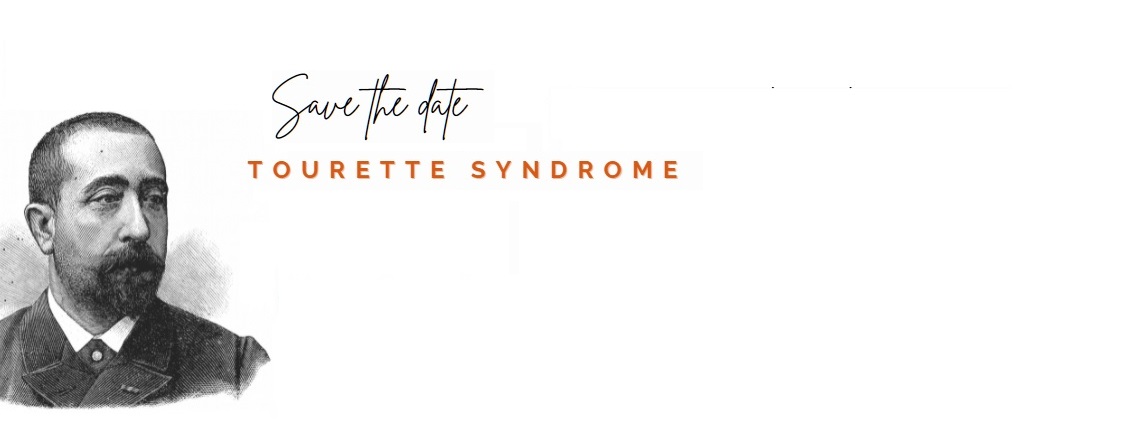ENGLISH
Tourette syndrome (TS) is a relatively frequent, enigmatic neurological condition.
Both genetic and environmental aspects participate in its aetiology; currently, the main known aspects of the mechanism of disease comprise, although without defined anatomical abnormalities, a dysfunction in the cortico-striato-thalamic circuits and in the basal ganglia -who have a recognized role in motor, cognitive emotional and motivational functions- and the alteration of several neurotrasmitters: above all, but not only, catecholamines.
The clinical picture of TS is extremely varied both inter-individually and intra-individually, during different periods, and it is characterized by a broad spectrum of symptoms: in facts, besides of the most recognized motor and phonic tics -which can be simple or complex-, patients often display other neuropsychiatric manifestations, including obsessive-compulsive behaviours/disorder (OCB/OCD), attention deficit and hyperactivity disorder (ADHD), among others. These aspects will be explained in detail during the congress.
TS is not a rare disease: epidemiological studies consistently report a prevalence of 1% among the general population. TS can have a significant impact on the quality of life of individuals, impacting both their working/educational life as well as their social and familial life. However, it is often misdiagnosed or not recognized, or finally diagnosed after a long delay. Citing an article1 by prof Jankovic J, and Dr Kurlan R., published in Movement Disorders Journal: “Despite increased educational efforts, the diagnosis of TS often is still made not by pediatricians or other physicians but by the patients themselves or their families as a result of information obtained from the media or the Internet.”
For these reasons, AIST (Associazione Italiana Sindrome di Tourette) is in first line in improving the knowledge of this condition, and in occasion of the international day of Tourette Syndrome, organized this important international meeting engaging experts from different scientific background from all over the world, with the aim of improving the care of TS patients, from the diagnosis to the therapy and global management of the condition.
Heartfelt thanks to the entire AIST staff and, in particular, to its president Donatella Comasini, for their invaluable help and efficient
collaboration and to all the participants of this meeting, for their precious contributions.
Mauro Porta, President Scientific Committee AIST
1 Jankovic J, Kurlan R. Tourette syndrome: evolving concepts. Mov Disord. 2011 May;26(6):1149-56. doi: 10.1002/mds.23618. Epub 2011 Apr 11. PMID: 21484868.
ITALIANO
La sindrome di Tourette (TS) rappresenta una condizione neurologica relativamente frequente, ancorché enigmatica. Fattori genetici e ambientali partecipano al suo determinismo; i principali aspetti del meccanismo fisiopatologico comprendono delle alterazioni a livello di:
-circuiti cortico-striato-talamici; -gangli della base, che hanno un ruolo noto nella funzione motoria, cognitiva, emotive e motivazionali;
-diversi neurotrasmettitori, in particolare le catecolamine e soprattutto la dopamina.
Il quadro clinico della TS è estremamente variabile sia a livello interindividuale che intra-individuale, potendosi presentare anche anche nello stesso soggetto manifestazioni varie nei diversi periodi.
Lo spettro dei sintomi è molto ampio: infatti, oltre ai più riconosciuti (tic motori e sonori, che possono essere semplici o complessi) sono spesso presenti altri disturbi neuropsichiatrici, inclusi comportamento ossessivo-compulsivo, deficit di attenzione e disturbo da iperattività (ADHD) che rappresentano le comorbilità comunemente riscontrate costituenti elementi diagnostici che connotano quadri sottotipici di TS:, La TS non è una malattia rara: studi epidemiologici riportano in modo concorde una prevalenza dell'1% tra la popolazione generale. Essa può avere un impatto significativo sulla Qualità della Vita, influendo anche sulla attività lavorativa e scolastica. Si tratta di una patologia spesso non riconosciuta o diagnostica in ritardo, con ovvie conseguenze. In un articolo pubblicato nel Movement Disorders Journal, i neurologi statunitensi J. Jankovic e R. Kurlan affermano: “Nonostante l'aumento degli sforzi educativi, la diagnosi di TS spesso è ancora formulata non dai pediatri o altri medici, ma dai pazienti stessi o dalle loro famiglie, grazie a informazioni ottenute dai media o da Internet."
Per questi motivi l'AIST (Associazione Italiana Sindrome di Tourette) si pone in prima linea al fine di migliorare la conoscenza di questa condizione e, in occasione della Giornata Internazionale della sindrome di Tourette, organizza questo incontro internazionale coinvolgendo esperti di diversa estrazione scientifica, con l'obiettivo di sensibilizzare e migliorare, dalla diagnosi alla terapia, la gestione degli individui affetti.
Tengo a ringraziare lo staff AIST Onlus e, in particolare, la Presidente Donatella Comasini, per la loro attività instancabile e collaborazione. Sono grato a tutti i relatori e a chi vorrà partecipare a questo momento di sicuro significato culturale con valenze sociali.
Mauro Porta, presidente comitato scientifico AIST
1 Jankovic J, sindrome di Kurlan R. Tourette: concetti in evoluzione.

